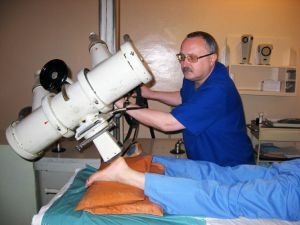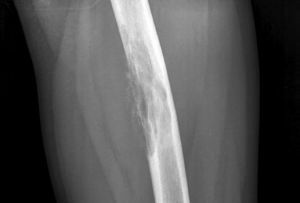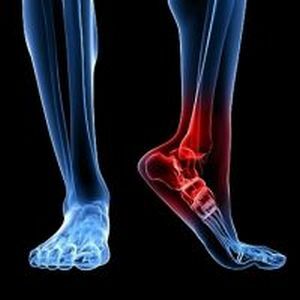 To the development of tendovaginitis, feet are caused by a variety of factors - most often the cause lies in the infection of infection or the acquisition of microtraumas of tendons.
To the development of tendovaginitis, feet are caused by a variety of factors - most often the cause lies in the infection of infection or the acquisition of microtraumas of tendons.
The consequences of this disease can be quite serious.
Therefore, when the slightest symptoms of the pathology should immediately consult a doctor.
The content of the article
- What is the essence of pathology?
- Causes of the disease
- Classification of the disease
- Symptoms of the disease
- How to organize the treatment of the disease
- Complications and consequences
- Preventive measures
What is the pathology?
This term is commonly understood as a pathological process of a degenerative-inflammatory nature that is localized on the inner sheath of the tendon sheath.
This pathology belongs to the category of occupational or sports diseases, since its occurrence is most often associated with the characteristics of the activity.
This process is typical for those who are forced to perform the same type of foot traffic.
In addition to the fibrous vagina, the pathology also affects adjacent tissues. This is due to the fact that all parts of this mechanism closely interact with each other.
Causes of the disease
To the development of tendovaginitis of the tendons of the foot, the following factors usually lead:
- monotonous high intensity loads that fall on the foot or shin;
- infectious lesions of nearby organs;
- development of rheumatoid arthritis;
- is lupus erythematosus;
- problems in metabolic processes;
- stretching and tearing of the ligament apparatus;
- fractures;
- traumatic injury.
Classification of the disease
In medicine, there are several classification signs of tendovaginitis of the foot:
- depending on the nature of the appearance - aseptic and septic;

- depending on the course - acute and chronic;
- , depending on the composition of the inflammatory fluid - purulent, serous, fibrinous, hemorrhagic.
Serous exudate includes a translucent liquid with an increased amount of protein - about 2-3%.The hemorrhagic fluid also contains red blood cells and other blood components.
The fibrinous fluid is characterized by a high content of blood proteins, which form the basis of thrombi. These include fibrin and fibrinogen. Under purulent exudate is meant a turbid liquid of dense structure, in which there is a protein in an amount of 6-8.
In addition, it contains many dead tissue cells and all kinds of leukocytes.
Depending on pathogenetic changes in the synovial membrane - chronic stenosing, initial and exudative-serous form.
Symptoms of the disease
Tendovaginitis of the foot may occur in acute or chronic form and, depending on this, the symptoms of the disease differ. Thus, the acute disease is characterized by such manifestations:
- severe swelling of the synovial membrane;
- mobility impairment;
- appearance of painful swelling in the tendon sheaths;
- a rush of blood;
- appearance of crunch when moving;
- contracture.
With the onset of an inflammatory purulent process, chills occur, body temperature increases, and lymph nodes and adjacent vessels become inflamed.
The chronic form of tendovaginitis is usually associated with a person's professional activity and is characterized by the following manifestations:
- painful sensations that occur with active movements;
- decreased mobility of the joint;
- appearance of a crunch or snap while driving.
How to organize the treatment of the disease
 In order to maximize the effectiveness of the treatment of tenosynovitis, a detailed examination is necessary. The diagnosis is based on a characteristic clinical picture.
In order to maximize the effectiveness of the treatment of tenosynovitis, a detailed examination is necessary. The diagnosis is based on a characteristic clinical picture.
With the development of acute inflammation of the purulent character in the blood, an increase in ESR, leukocytes and an increase in the volume of stab neutrophils are detected.
To detect the pathogen and determine its sensitivity to antibacterial drugs, a bacteriological analysis of pus is carried out.
To exclude other processes, radiography is assigned. However, it will not be possible to confirm the diagnosis with her, since this study shows an exceptionally increased volume of soft tissues.
The choice of tactics of therapy is directly influenced by the form of the disease. Thus, in an acute period, it is necessary to provide an elevated position of the limb.
To cope with the nonspecific infection process, the use of antibiotics and drugs to strengthen the immune system is indicated.
In the acute form of aseptic tenosynovitis, non-steroidal anti-inflammatory drugs are used - the doctor can prescribe indomethacin or butadione. If the disease is of a tuberculosis nature, use of anti-tuberculosis drugs - streptomycin or ftivazide - is indicated.
After the acute inflammatory process is stopped, the patient is prescribed exercise therapy and physiotherapy procedures.
These include:
- electrophoresis with hydrocortisone and novocaine;
- ultraviolet rays;
- ultrasound;
- UHF;
- microwave treatment.
If the patient has an acute purulent pathology, immediate opening and draining of the  tendon sheath is performed. In this case, the doctor prescribes antibacterial drugs, taking into account the sensitivity of the causative agent of the disease.
tendon sheath is performed. In this case, the doctor prescribes antibacterial drugs, taking into account the sensitivity of the causative agent of the disease.
With the development of the chronic form of the disease it is necessary to use all methods of physiotherapy.
Also available:
- paraffin applications;
- Ozokerite;
- exercise therapy;
- massage;
- electrophoresis with lidase.
A person with this disease can be prescribed non-steroidal anti-inflammatory drugs. Glucocorticosteroid drugs are introduced into the inflammatory focus: methypred, dexazone, hydrocortisone.
If a person has crepitic tendovaginitis, which is difficult to treat, X-ray therapy can be used.
In the inflammatory process, which appeared as a result of rheumatic pathology, use basic and anti-inflammatory drugs. Also shown is the use of electrophoresis with non-steroidal anti-inflammatory drugs and hydrocortisone.
 Sometimes you can not do without surgery. A direct indication for the operation is stenosing and long-lasting forms of pathology that do not lend themselves to conservative methods of treatment.
Sometimes you can not do without surgery. A direct indication for the operation is stenosing and long-lasting forms of pathology that do not lend themselves to conservative methods of treatment.
In this case, the tendon vagina is completely removed, after which the subcutaneous fat is sewn to the skin. For a couple of weeks fix the foot - for this purpose a plaster boot is used.
In addition, the use of antibacterial drugs, physiotherapy and exercise therapy is shown.
After the surgery, the prognosis is usually favorable. As a rule, in the long-term period, the functions of the foot are completely restored.
Complications and consequences
If timely not to start treatment of tendovaginitis, enough dangerous complications can develop. They include the following:
- fistula;
- contracture;
- stenosis of the ligament canal;
- development of an abscess;
- infection of adjacent tissues;
- overgrowth of scar tissue;
- formation of dense nodes in the tendon region;
- loss of functions of the damaged leg.
Preventative measures
To prevent the development of pathology, you need to take preventive measures. These include the maximum  reducing the load on the shin, the correct selection of shoes.
reducing the load on the shin, the correct selection of shoes.
Doctors recommend periodically changing the type of activity and taking short breaks in work.
Equally important is a full-time warm-up of muscles before starting work or training.
Tendovaginitis of the foot is a serious enough pathology, which can lead to negative health consequences. This disease is accompanied by intense pain and can significantly worsen the quality of life.
In order to prevent the occurrence of dangerous complications, when you have the first pain in the foot area, you need to see a doctor. The specialist will put an accurate diagnosis and choose the most effective therapy.



